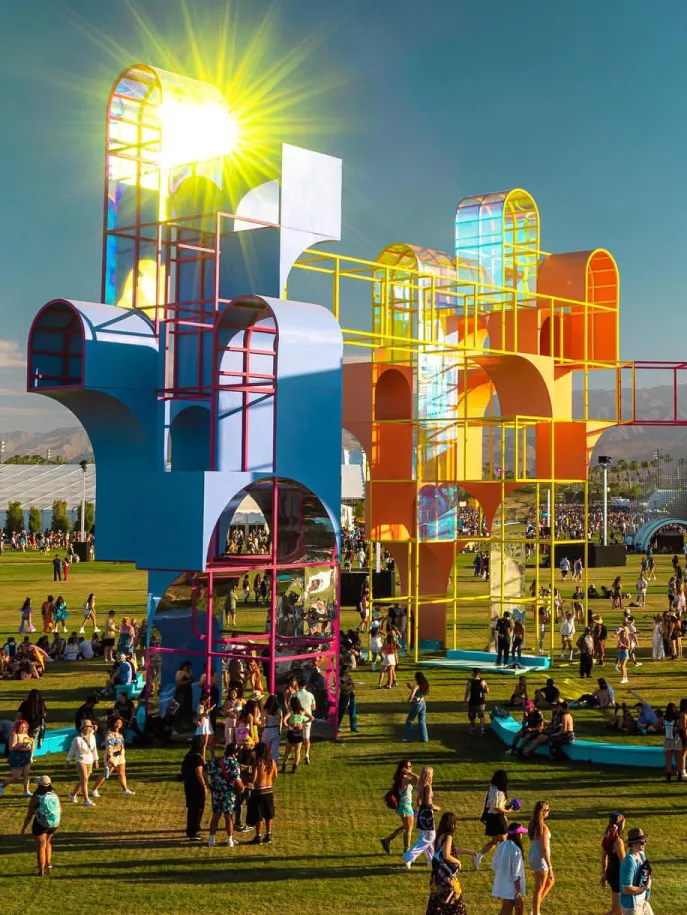
PEACE MUSIC
"In the '70s, rock festivals meant dilapidated pitch and long queues leading to the restrooms,"
As the head of Congressional Records in 2003
As Andy Slater told The Times.
"And Coachella has revolutionized the rules of music festivals."
The Coachella is beautiful, decent and comfortable.
This April, after two years of silence due to the epidemic, Coachella, the world's largest music festival, finally returned with its usual strong lineup, featuring Ha Roll Harry Styles, Billie Eilish and potted plants The Weekend & Swedish House Mafia, as well as Asian faces such as Gail Wang, 2NE1 and Utada Hikaru, made surprise appearances. As the first Chinese singer to appear on Coachella's main stage, Wang Jiaer shouted "This is Jackson Wang from China!" after completing his performance, which directly brought the topic "Coachella" to the top of Weibo's hot search that night. The topic "Coachella" was the number one trending topic on Weibo that night.
The curtain has come down on a two-weekend feast of powerful performances, and while we look back at the highlights of Coachella 2022 (in the fine flesh of Garrett Wang), we might take this opportunity to go back further in time: where did the modern music festival come from? And how did Coachella become the largest and most profitable general music festival in the United States and the world?
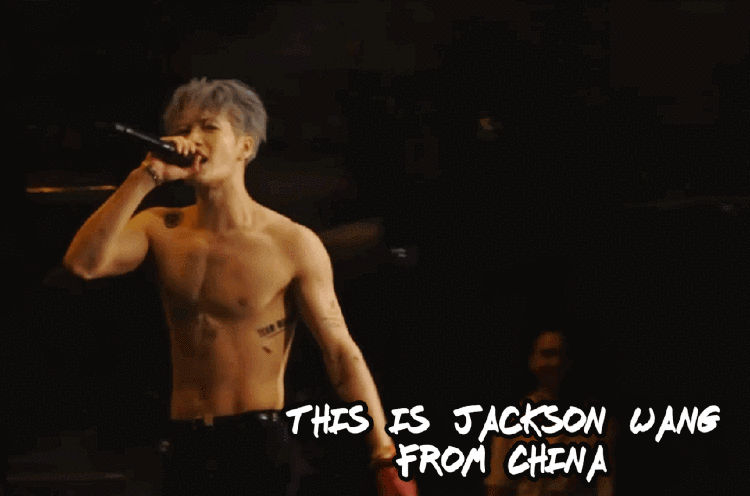
Woodstock Festival
Only once did music save the day, and that was Woodstock.-- Gates of Eden
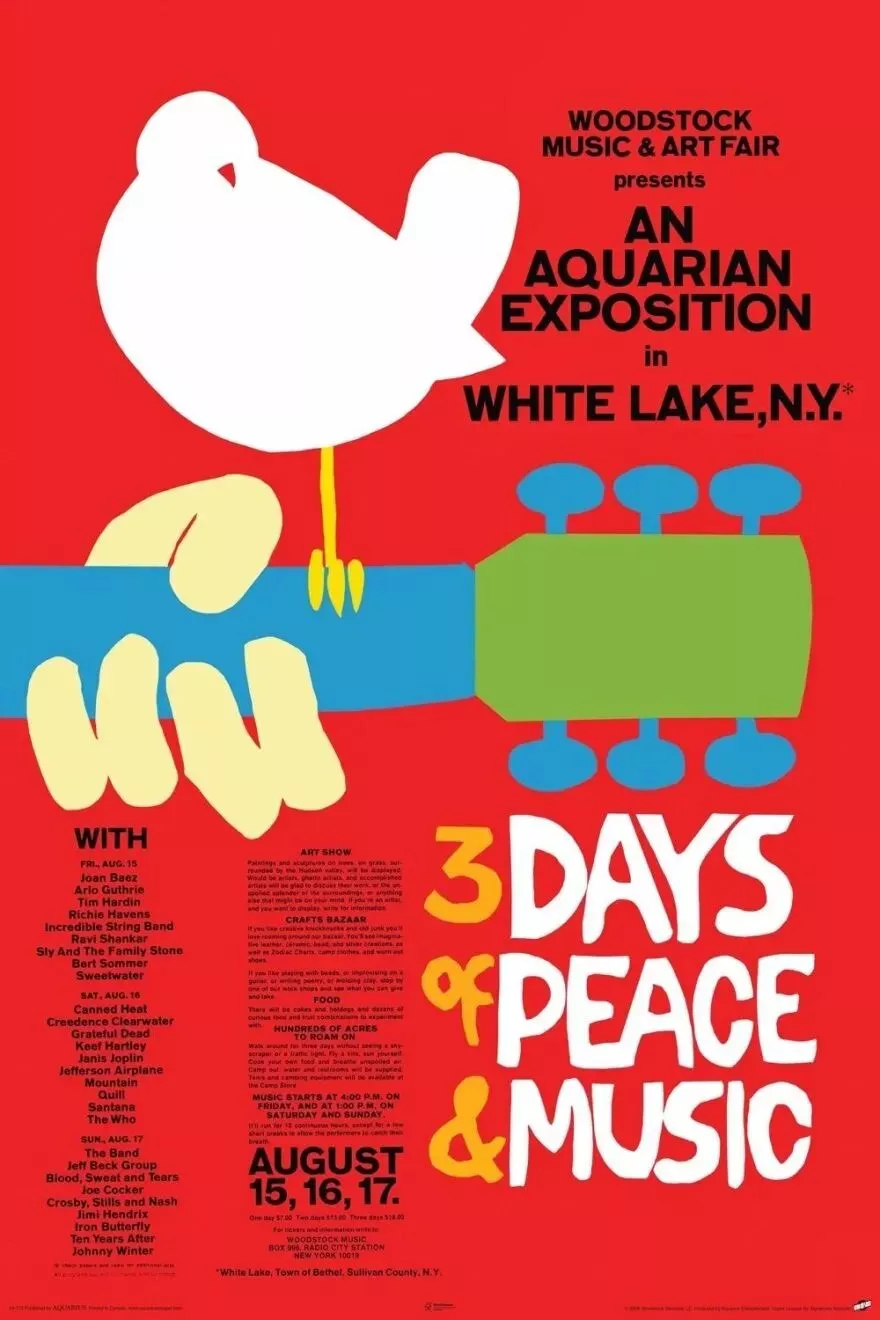
When it comes to music festivals, you have to mention Woodstock.
The earliest record of music appearing in festivals dates back to ancient Greece, where people began playing music at Delphi during the celebration of Apollo, the sun god. In medieval Europe, musical competitions became somewhat popular, and in 1743 Handel attended an oratorio performance at the Covent Theatre in London, after which oratorio performances became an annual festival, and the concept of a music festival was born.
And the rally-style modern music festivals that we are now familiar with didn't really come into existence until the 1960s.
"Material prosperity, women's equality, the moon landing, the assassination of the president, the Vietnam War, and the nuclear war crisis." ...... The United States of America in the 1960s was both rich and chaotic, and the Beat Generation, growing up in the aftermath of World War II, found that material prosperity could not fill their spiritual void. "They began to question the value of struggle and the meaning and rationality of living the blueprint of the so-called American Dream, so a group of young people chose to follow Kerouac on the road to explore and find their own way of living with the world. They sought a new way of life and deliberately acted against the mainstream by growing their hair long, wearing strange clothes, giving up their jobs, and becoming addicted to hallucinogens and rock and roll, also known as Hippies. "The Hippie movement, centered in San Francisco, USA, later spread throughout Europe and the United States and had a profound impact on European and American culture.
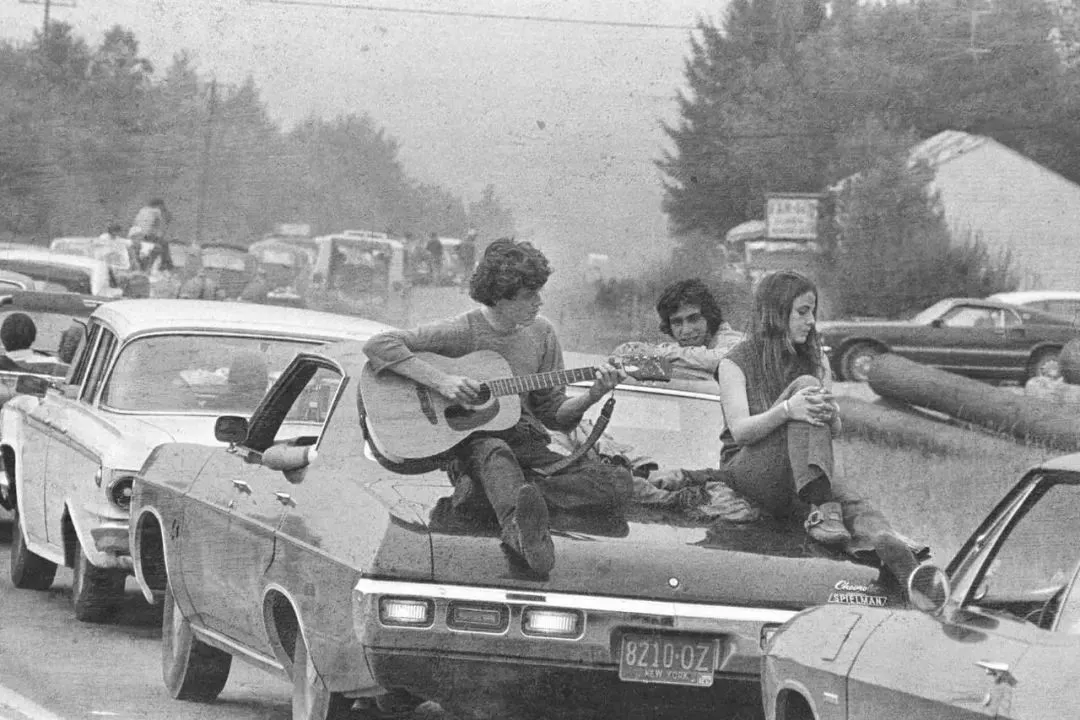
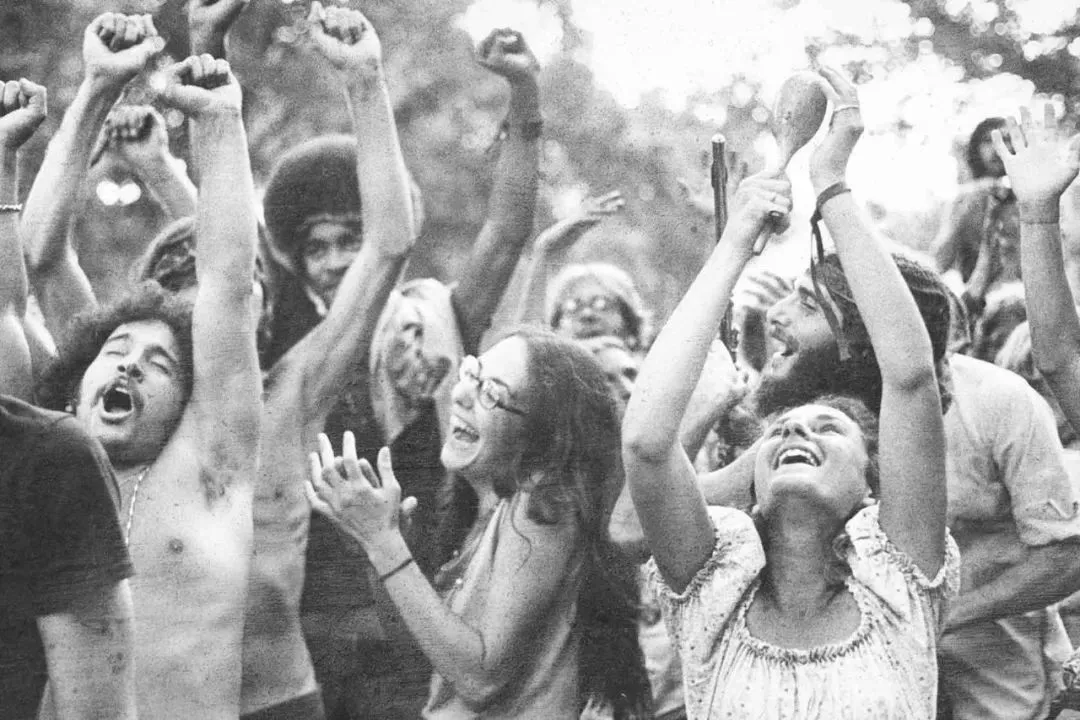
Hippies advocated benevolence, opposed war, promoted pacifism, and were not happy to be involved in politics, while at the same time, under the influence of artistic trends such as modernism, rock music was born and became a form of shouting and calling for peace, and rock festivals became popular as a vehicle for hippie culture. Rock music was born and became a form of shouting and calling for peace, and rock festivals became popular as a vehicle for hippie culture.
The Fantasy Fair and Magic Mountain Music Festival by San Francisco and the Monterey International Pop Festival in California kicked off the 1967 "Summer of Love".
Two years later, four young men led by Mike Long joined forces to create Woodstock Ventures Ltd. and decided to put on a youth music festival, inviting some of the most influential folk as well as rock artists of the time, including Bob Dylan, Richie Havens, Janis Joplin, Jefferson Airplane, The Grateful Dead, Jimmy Hendrix, The Who and many others. They assured local authorities that the turnout would not exceed 50,000, but what they didn't expect was that more than 400,000 young people would converge on the small town of Bethel in southeastern New York State from August 15-18, 1969 (the festival was later extended by one day due to rain), for the "THREE DAYS OF PEACE AND MUSIC". "THREE DAYS OF PEACE AND MUSIC", the Woodstock Music & Art Fair.
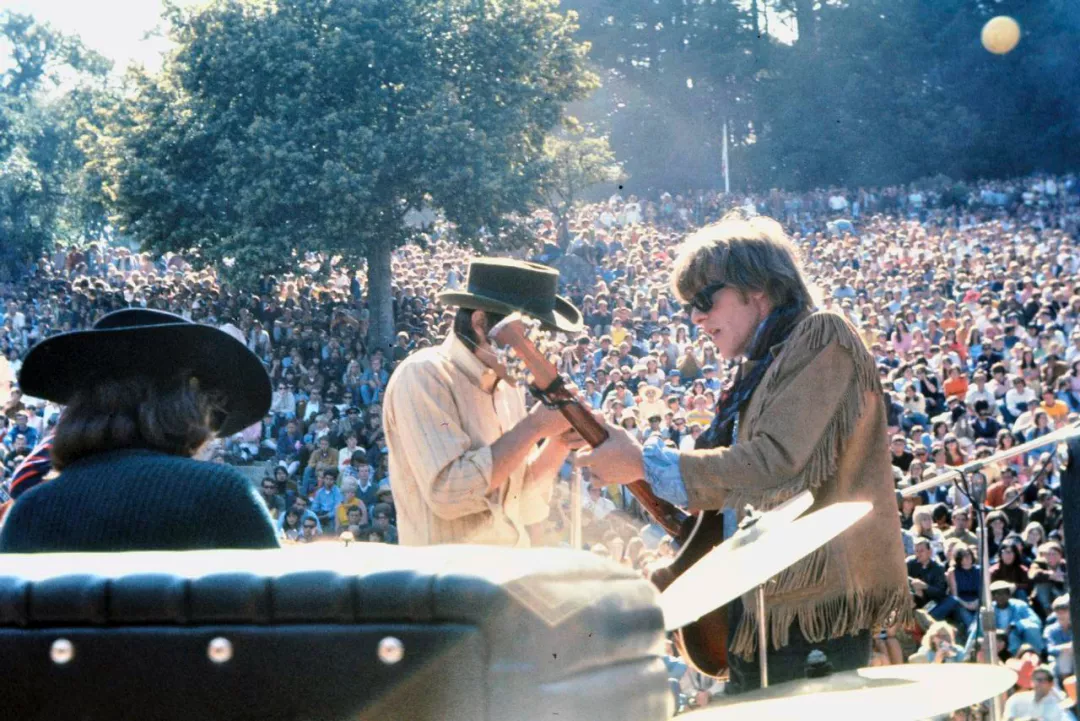

And with such extreme crowding and chaos, over 400,000 people came together for four peaceful and friendly days without even a single violence. The policeman keeping order in the documentary confessed, "These spectators in strange costumes were the most polite young people I have ever met in my career." People of different places and races, but with the same aspirations and ideals, came together to sing, talk, share food and laugh in friendship, to shout love and peace amidst guitars and drums, and to put into practice their own manifesto of "Make Love, not war", creating a miraculous utopia.
From then on, the festival is not only about the music, but also about the spirit and cohesion that the music conveys, becoming a complete cultural experience.
But just four months after Woodstock ended, the Rolling Stones launched the Altamont Free Concert in anticipation of a night of free indulgence, only to wait for escalating violence, death and theft after nightfall ......1999's Woodstock 30th The 1999 Woodstock 30th Anniversary Festival was a historic disaster, with harsh environmental conditions filled with violence, sexual assault, robbery, vandalism and fire, resulting in three deaths, 1,200 people in need of medical treatment and 44 arrests.

Rage Against The Machine at the 1999 Woodstock Festival
At the same time, as the hippie movement gradually expanded, the early "idealists" became fewer and fewer, and the "decadents" that emerged stripped the rebellion down to its bare shell and fell back on hedonism. The hippies gradually moved from being the promoters of social movements to becoming the consumers of a commodity society.
The flag of freedom came tumbling down, and Woodstock 1969 faded into symbolism, a summer night gathering where peace and music were the only things that could not be replicated.
In Coachella, we lost our virginity again.——Daft Punk
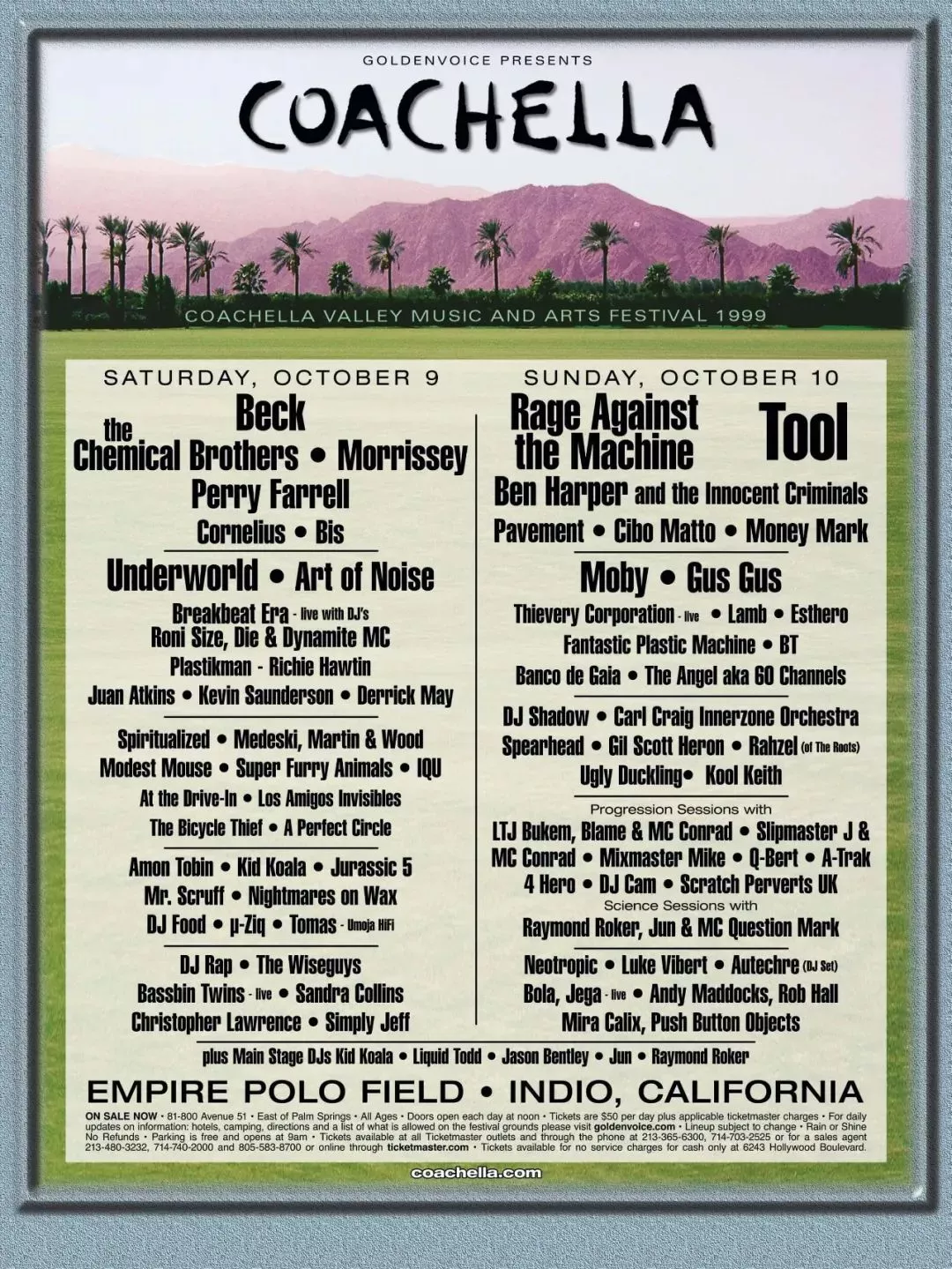
Chance and opportunity
The Birth and Resurrection of Coachella
And while the specter of riots and violence at the rally was still fresh, and people equated the festival with potential danger, three months after the disastrous Woodstock '99 ended, Coachella came to town.
In the late 90's, Ticketmaster had a monopoly on all concert ticket sales, blocking 90% of the touring circuit in the country, and Pearl Jam, who were touring at the time, did not want to be part of this music conglomerate giant, when Goldenvoice, a music production company, came along and booked a venue for Pearl Jam in the "Coachella Valley" in the California desert. Goldenvoice, a production company, booked Pearl Jam in the "Coachella Valley" in the California desert and held a successful protest against Ticketmaster, which gave Goldenvoice the idea to hold a festival there ......
Coachella, as the Coachella Valley Music and Arts Festival was known, was written about in Rolling Stone magazine back in the day, and founder Paul Tollett wanted Coachella "to recreate a European-style music festival" that "prioritizes space, comfort and an overall cool vibe."
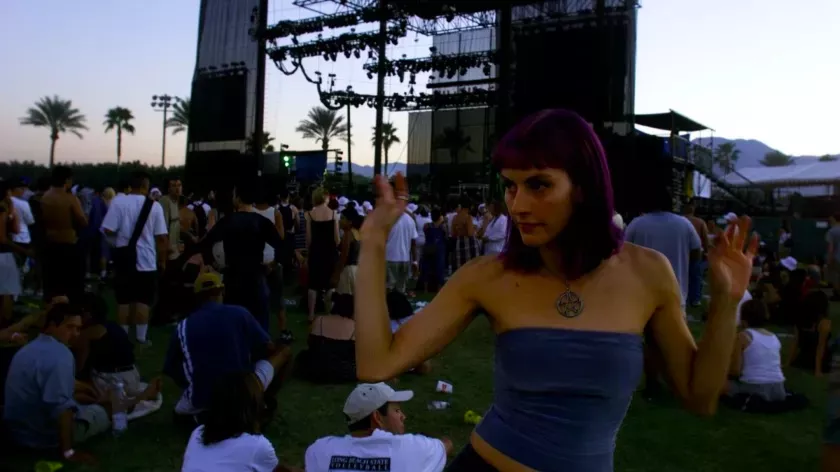
Melissa Bennett dances at the first Coachella Festival in 1999
The inaugural Coachella was a bold attempt to bring in such notable musicians as Beck, Morrissey, Tool, and Rage Against the Machine, but many factors hampered its success in 1999, on top of the riotous aftermath in Woodstock and perhaps the desert heat of the small town of Indio in October. Ticket sales for the inaugural Coachella were dismal, with only about 25,000 of the $50 tickets ending up being sold, and Tollett revealed afterwards that the company lost about $750,000. Violent Resistance Machine guitarist Tom Morello recalled later that "it was super hot and far away" and that "it was a commercial disaster. After the weekend was over, they [the organizers] asked us to refund half of the show's fee."
Predictably, with huge debts, Coachella was discontinued the following year, and the first Coachella almost became the last. But luckily, in 2001 billionaire Phil Anschutz's Concerts West bought Goldenvoice, which was in dire financial straits, and Coachella returned a year later, moving the event from October to April and cutting the original two days down to one - a deal that Tollett would later often refer to as saving Coachella.
Coachella today is a comprehensive music lover's paradise, containing the most diverse and extensive selection of music; indie, alternative, rap/hip hop, electronic, dance, rock, punk, pop ...... There doesn't seem to be a genre you can't find on the Coachella schedule.
And looking back at the development of music genres throughout Coachella's history, it's an interesting fact that organizer Goldenvoice, a dedicated punk music production company, was among the 75 performers at the 1999 Coachella Festival, yet with 30 electronic bands, including the Chemical Brothers, Coachella showcased deeply the growth and popularity of electronic music, which lit up the festival that year .
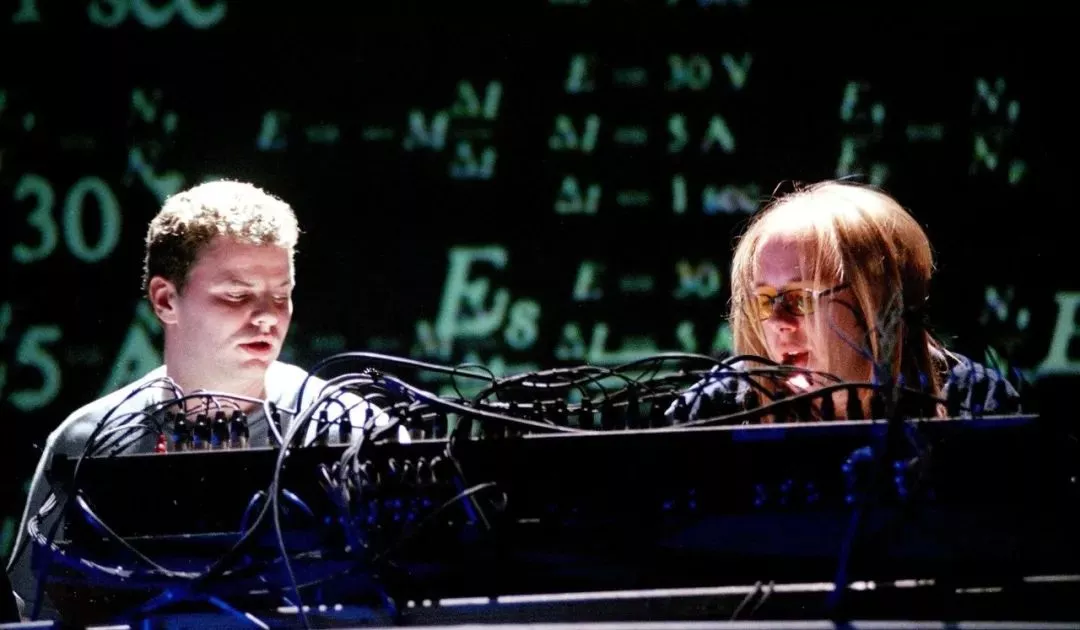
The Chemical Brothers at the inaugural Coachella
By the early 2000s, indie and alternative music began to take over the festival, with finale acts like Oasis, Björk and Jane's Addiction beginning to appeal to the masses. 2006 saw indie music take the biggest share of genre music, and thanks to Madonna, pop music was also making a splash at the festival. After Coachella's big win in 2006, Manuel De Homem-Christo, a member of the stupid punk band, said, "At Coachella, we lost our virginity again." Coachella replaced Woodstock as the new phenomenal music festival.
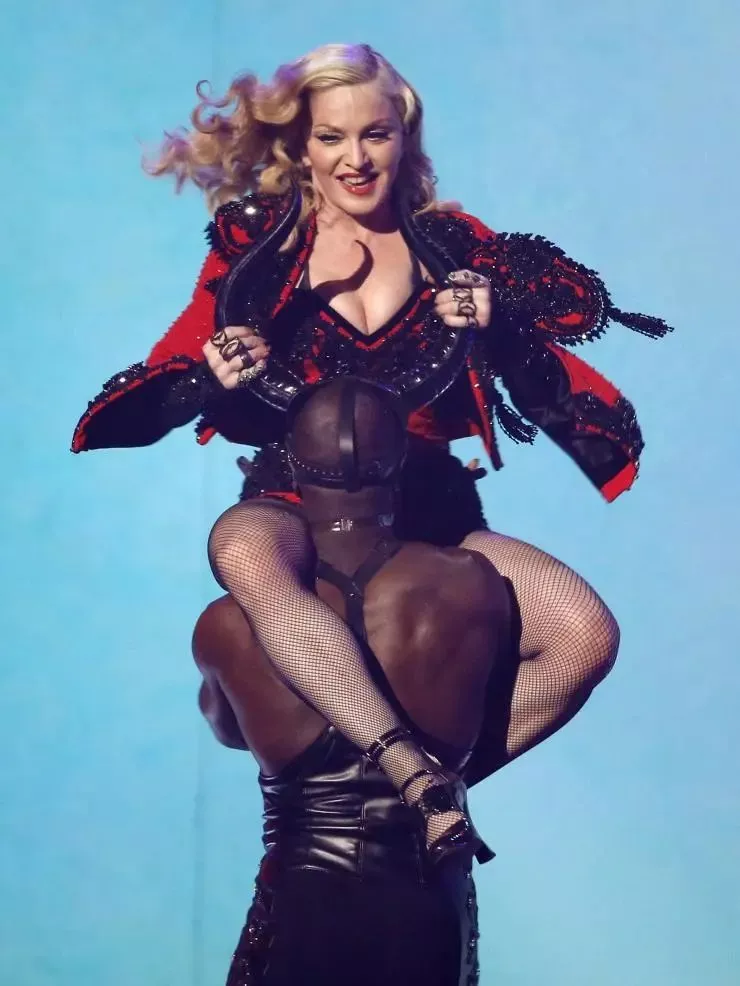
Madonna at Coachella 2015
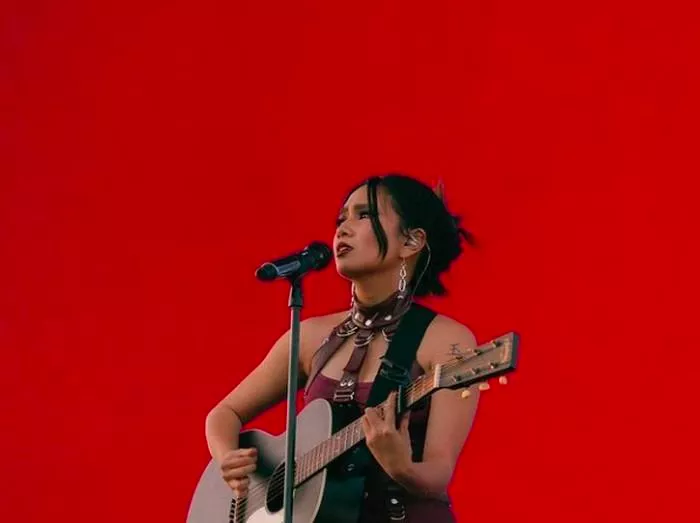
Indonesian musician Niki Zefanya at Coachella 2022
Next Coachella began to strike a unique balance between the indie, dance, pop and hip-hop worlds, with traditional indie acts typically constituting about a quarter of the lineup, dance and electronic music will always be well represented, pop and hip-hop fluctuate somewhat in the lineup percentage, and Coachella has gradually become an indie musician due to its focus on music and genres that are great but have yet to receive mass attention a haven for up-and-coming artists.
And as the name suggests, in addition to being a music festival, Coachella is also positioned as an art festival, and every year, the design and visual presentation of the Coachella venue is updated: visual art, interactive exhibitions, displays, giant sculptures ...... A large number of art installations attract a very large number of art lovers and not only music lovers. These artworks often share a common characteristic: they are huge.
We want you to feel the visual impact from a hundred miles away", says founder Tollet, and it's working, as the giant art installations, set against a backdrop of sunset, sand and cactus, have become a popular destination for celebrities and netizens alike. Together with the name "Coachella", these huge art installations have become a popular destination for celebrities and netizens from all over the world.
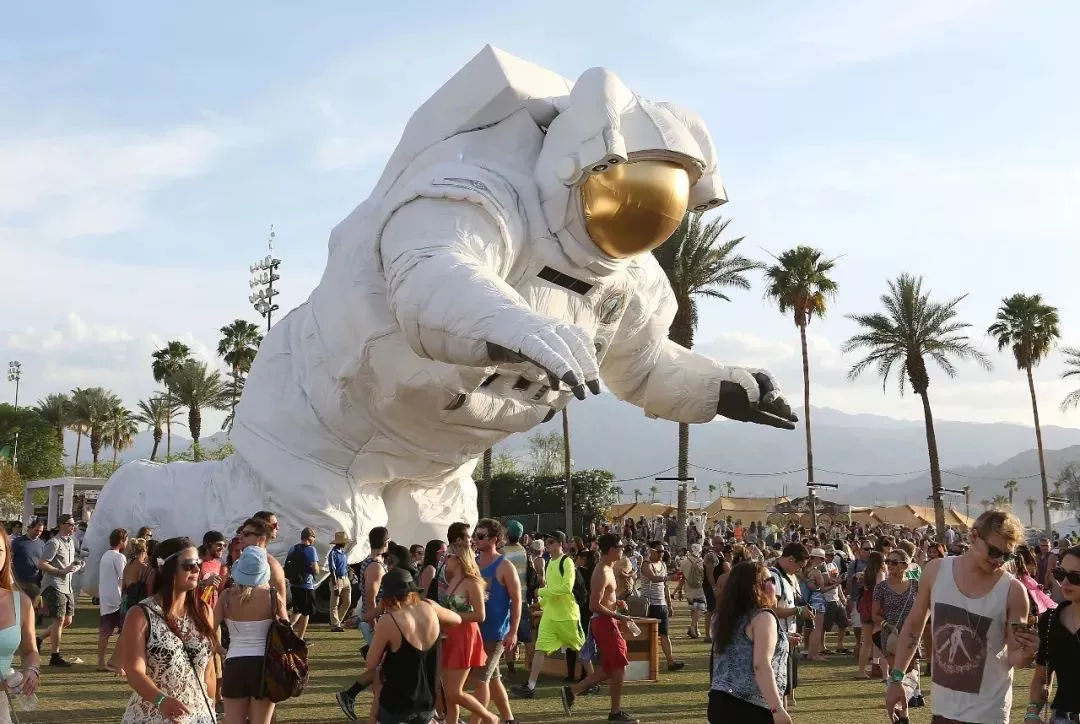
In addition to the stages and exhibits, there will be a tent area on site, bringing the new lifestyle experience of desert camping to life over the festival's three days. "In the '70s, rock festivals meant run-down stadiums and long lines to the restrooms," as Andy Slater, head of Congressional Records, told The Times in 2003, "and Coachella revolutionized the rules of the festival. " Coachella is beautiful, decent and comfortable.
Unlike other genre-specific festivals that attract a niche but loyal group of fans, Coachella's diverse and comprehensive positioning has made its expansion come easier and faster.
More and more young people came to Coachella, and the festival gradually reverted from one day in 2001 to two days, and then to a three-day weekend. in 2012, tickets sold out in record time, and many people complained that they couldn't get tickets. To solve this problem, the company took a huge risk and decided to expand the festival to two weekends, with the same lineup, the same acts coming twice, or two weekends in a row - would audiences buy it? Once again Coachella proved to be the right bet, as this year all tickets for both Coachella weekends sold out within half a day of opening, again.
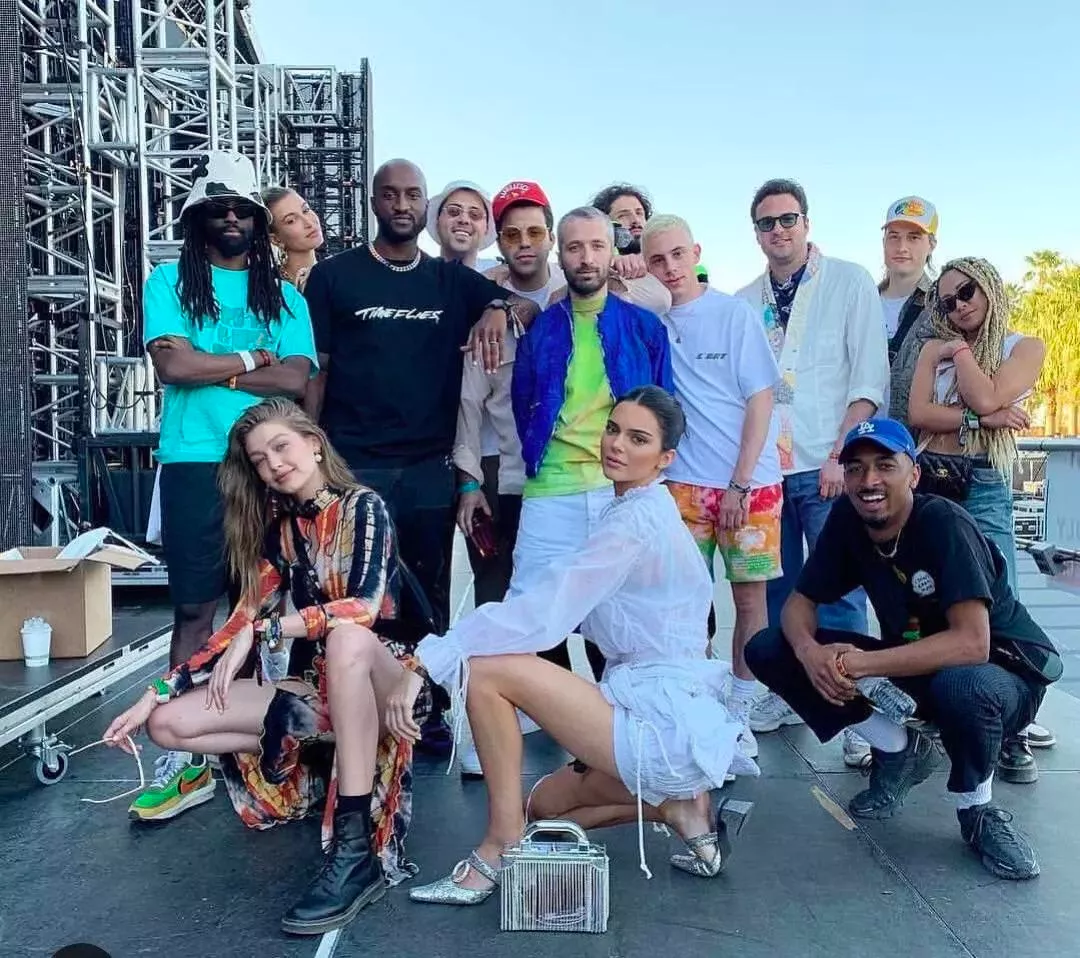
"The vibe is important," says founder Tollet from the start. , "We don't hand out pamphlets, ads and stickers during the festival. Unlike some festivals in this country, which are just marketing conventions disguised as festivals." Although the first few festivals paid the price of losing money to avoid such sponsorships, as Coachella's reputation grew, quality partnerships from major brands soon approached.
Coachella's success lies beyond the music, but also in its clever combination of festival and business. Now, thanks to Coachella's superb exposure, many major brands use Coachella as a launch pad for social events, and Coachella has become not only the most popular annual gathering place for artists, but also a major marketing opportunity for brands and celebrities.
Coachella is highly saturated with exclusive brand sponsorships, including influencer pool parties, celebrity stylists' braid bars, flash concerts and more.

At the same time, Coachella became a way for brands to connect with the Z generation. They recruited KOLs on social media, sponsored their trips, dressed them up and paid them to post about it on social platforms, a practice also known as experiential marketing. Fashion brand Revolve, for example, invited Instagram "it-girls" to Coachella, providing them with Revolve outfits, which received billions of views through the photo content posted by the internet celebrities. In response Revolve co-founder Michael Mente compared Coachella to Fashion Week, saying, "Coachella, and the festival more broadly, has become the new Fashion Week for millennials. It's authentic and experiential; an environment where everyone should have fun choosing to push the limits of fashion."
We haven't had that spirit here since 1969, the Eagles' "Hotel California" sings. The 1969 in this case refers to that year in Woodstock.
In the 21st century, the concept of music festivals has long been unfamiliar to us, yet from Woodstock to Coachella, the cultural heritage of the 1960s is mostly gone, leaving behind only the formal shell of free assembly. Festivals have shifted from the protest of the hippie anti-mainstream movement to the popularity of millennials themselves, the rebellion of youth has been taken up by commerce to its heart's content, and Woodstock has been brought out from time to time for consumption as a distant cultural symbol.
But half a century later, the nostalgic fusion of "peace and music" still retains some of its power in the contemporary scene, and the hope of love and peace lives on, and if the daylight is just right, Woodstock and Coachella have their moments of shadow overlap, as Lana Del Rey wrote in 2017 Coachella - Woodstock In My Mind, when Lana wrote on her Instagram.
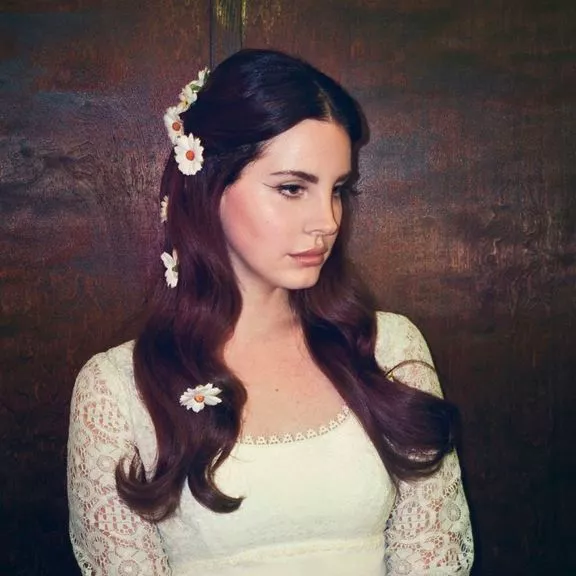
Coachella - Woodstock on my mind——Lana Del Rey
I'm not going to lie - it's complicated to spend a weekend dancing while watching tensions escalate in North Korea.
- I find it a tightrope between being alert to what is happening in the world and having enough space and time to appreciate God's good earth. *
On the way home, I found myself compelled to go to one of my favorite places on the edge of the world's highways, where I spent a little time sitting down by a grove of redwoods to write a little song.
I just wanted to share this in the hope that one's hopes and prayers for peace might contribute to the possibility of peace in the long run.
Hope everyone has a great day with love from California.